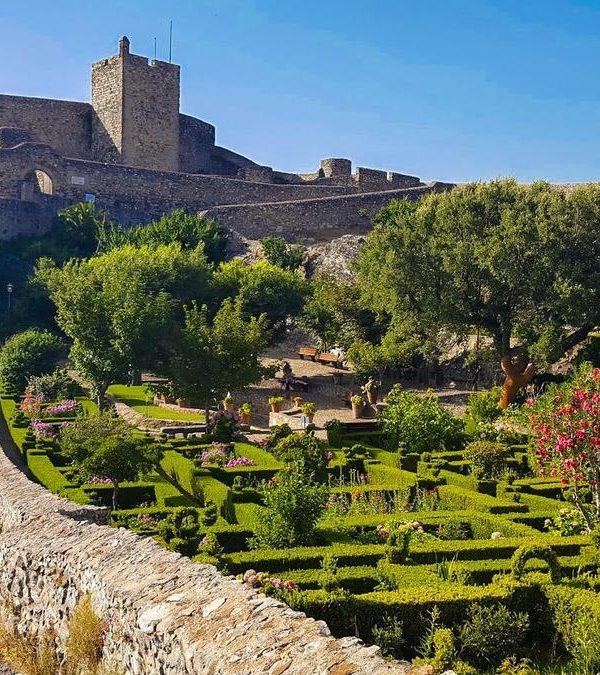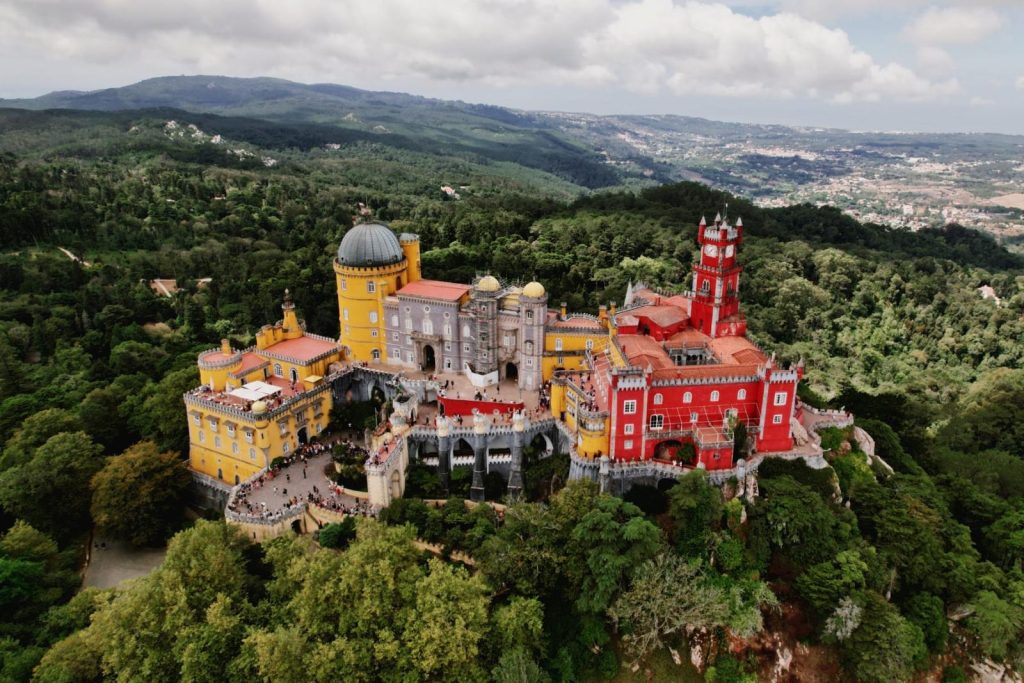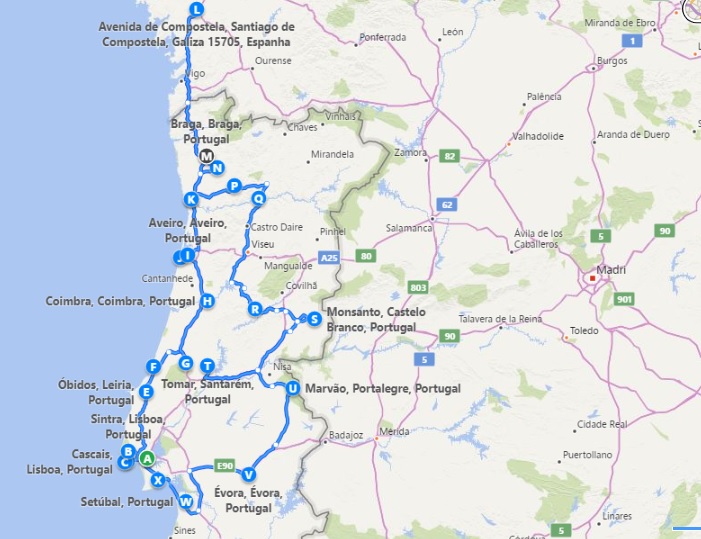Discover our 3 day Alentejo Tour in a 3-day adventure! Evora, a UNESCO World Heritage city. Visit the Roman Temple, the Bone Chapel, and taste local delicacies. Spend the night in a charming boutique hotel.
With a rich history spanning the Portuguese period and the era of the Iberian Peninsula, this region bears the marks of various ex-Hispanic civilizations, including the Romans, Christian Arabs, and even the Phoenicians, with legacies that date back over 3,000 years. The Phoenicians, Celts, and Romans all contributed to a cultural tapestry that has always intertwined tradition and heritage.
This private tour will start and end in the city of Lisbon. If you have any questions, feel free to contact us.
The Romans, in particular, left behind a wealth of artifacts, including writings, intricate mosaics, and significant cities and monuments. Yet, even older civilizations made their presence felt through megalithic structures, such as dolmens.
The Arabs, drawn by the intoxicating scent of jasmine, also left an indelible legacy. Following the reconquest, numerous castles and walls were constructed, many built atop former Muslim mosques.
3 Day Alentejo Tour: Discover History and Charm
Today, the region continues to thrive, particularly in agriculture, livestock, fishing, and industry. Cork production has especially captured the public’s interest, experiencing notable growth, particularly in tourism-related products.
On the second day, venture to Monsaraz, a stunning hilltop village overlooking the Alqueva Lake. Wander through its medieval streets, admire the castle, and indulge in a wine tasting session featuring Alentejo’s finest vintages. The views of the surrounding countryside are unforgettable.
On the final day, dive into the rural charm of the region. Visit a traditional olive oil producer or vineyard and enjoy the serenity of Alentejo’s vast plains. End your journey in Arraiolos, known for its intricate handwoven carpets and rich cultural traditions. This itinerary offers a perfect blend of history, nature, and gastronomy that makes Alentejo unforgettable.
Alentejo offers a perfect mix of history, nature, and gastronomy!
Clear your doubts now, contact us, or reach us on WhatsApp right away.
🗓️ Pricing:
| Number of People | Price | Price Person |
|---|---|---|
| 1 Person | 1150€ | – |
| 2 People | 1200€ | 600€ Per Person |
| 3 People | 1300€ | 433€ Per Person |
| 4 People | 1500€ | 375€ Per Person |
| 5 People | 1650€ | 330€ Per Person |
| 6 People | 1800€ | 300€ Per Person |
| 7 People | 1900€ | 271€ Per Person |
| 8 People | 2000€ | 250€ Per Person |
Itinerary
On the third day of our Alentejo itinerary, we will dive into a day filled with exploration, featuring a variety of visits and intriguing discoveries.
We’ll kick off our adventure at the Cromlech of Xerez, a remarkable megalithic site believed to have been erected between the early 4th millennium and the mid-3rd millennium B.C. This unique monument features a quadrangular layout centered around a menhir that stands about 4 meters tall, adorned with various “cupmarks” that enhance its mystique.
The Cromlech of Xerez consists of around 50 phallic-shaped granite menhirs, with heights ranging from 1.20m to 1.50m. In 2004, this fascinating site had to be relocated due to the construction of the Alqueva Dam.
The Alqueva Dam is the largest artificial lake in Europe, spanning approximately 250 km² with an impressive 1,100 kilometers of shoreline. This vast reservoir encompasses several municipalities in Portugal, including Portel, Moura, Reguengos de Monsaraz, Mourão, and Alandroal, as well as nearby Spanish towns like Olivenza, Cheles, Alconchel, and Villanueva del Fresno.
Construction of the dam began in 1998 and was completed in 2002 with the opening of the floodgates. Although it was initiated during the Salazar dictatorship, the project took over 50 years to come to fruition, making it one of the largest construction undertakings of the last century in Portugal.
The dam’s primary goal was to create an irrigation area in a region known for its dry climate while also generating hydroelectric power with a capacity of 520 megawatts, sufficient to supply the entire Beja region.
If weather conditions allow, we’ll embark on a delightful 90-minute boat trip to explore the dam and its picturesque islands, including the Golden Island, where we can pause for a refreshing swim. Locals often say, “I’ve eaten colder soup,” since the water temperature can soar to 29°C (84°F) during the summer months.
In this region, you’ll find numerous traditional restaurants offering excellent value for your money. Indulge in dishes featuring black pork (famous for its Iberian ham), along with local favorites like açordas and migas (both delicious bread-based dishes). Don’t miss the chance to try a hearty dogfish soup or a flavorful tomato soup—there’s something to satisfy every palate!
Next, we’ll head to Sao Pedro do Corval, a quintessential Alentejo village renowned as the capital of pottery. Here, you’ll discover over thirty potteries, each showcasing the region’s celebrated craftsmanship. If you’re feeling adventurous, you can even try your hand at making your own pottery piece!
If time permits and you wish, we can also arrange a visit to Esporão, one of the most beautiful and important wineries in Portugal (tickets not included). Get ready for a day full of discovery and delightful experiences in the heart of Alentejo!
Today, we embark on our return to Lisbon, but not before immersing ourselves in the charm of Arraiolos, renowned for its exquisite tapestry and its unique circular medieval castle, built by King Dinis (1279-1325). The town has beautifully expanded beyond the castle walls, offering a glimpse into its rich history.
Next, we’ll head to Sesimbra, where the majestic castle of Moorish origin proudly stands. Known as the Castle of the Moors, this fortress is the oldest in the Sesimbra municipality and the entire district. Constructed at the highest point for optimal protection and breathtaking views, it reflects the strategic importance of the site. Built by the Saracens, archaeological evidence also reveals the presence of other civilizations prior to the castle’s construction, evidenced by prehistoric and protohistoric artifacts found nearby.
In Sesimbra Bay, we’ll visit the Maritime Museum, a captivating exploration of the local community’s relationship with the sea. The museum showcases traditional fishing techniques and the rudimentary tools used by fishermen throughout history. Additionally, a 3D film offers an engaging journey through time, spanning from prehistory to the medieval period.
For lunch, we’ll stop in Setubal, a vibrant city where fishing and boat industries have historically driven the local economy. The port of Setúbal significantly boosted the fishing and canning industries, making the city a key player in maritime trade.
As we stroll through the city center, you’ll discover shops catering to every taste and age—from global brands to local treasures and unique artisanal products. Culture is woven into the fabric of the city, with historic buildings that stand as living testaments to Setúbal’s growth and modernization, all while honoring its coastal roots.
Next, we’ll cross the stunning Arrabida Natural Park, one of Portugal’s most protected and diverse parks. With elevations exceeding 500 meters, it offers breathtaking views of the Sado River estuary, which is home to a resident colony of dolphins—a rare sight for these magnificent mammals.
Weather permitting, you’ll have the chance to embark on a boat tour to observe these incredible creatures in their natural habitat. The striking contrast of the park’s white limestone cliffs, the azure waters, and the lush greenery creates an unforgettable landscape.
Our journey culminates with a visit to the José Maria da Fonseca winery, famous for its Periquita wines. Here, you’ll enjoy a guided tour and a delightful wine tasting experience, savoring the exquisite flavors of the region.
Did you know that Periquita is one of the best-selling wines in Brazil? You’ll also have the opportunity to indulge in a local delicacy, the Azeitao Pie, a delicious conventual sweet where egg yolks take center stage.
Join us for this fantastic winery tour and enjoy the unique flavors and rich history of the Alentejo!



























